Announcement Week 2017: Day 1
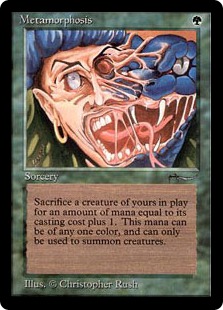 The longevity of Magic: the Gathering – beyond being mechanically sound – can be largely attributed to Wizards’ longstanding commitment to change. It may not always be popular or correct, but nevertheless, R&D is consistently working to improve the game and keep fans happy.
The longevity of Magic: the Gathering – beyond being mechanically sound – can be largely attributed to Wizards’ longstanding commitment to change. It may not always be popular or correct, but nevertheless, R&D is consistently working to improve the game and keep fans happy.
On August 25th, 2014, Mark Rosewater posted an article in the Making Magic column titled Metamorphosis that introduced major changes to set release structure and Standard rotation. Blocks went down from three sets each to two, and core sets were eliminated completely. The same number of sets were to be released, but these changes allowed for two smaller blocks per year rather than one. In Standard, the first set of each block would now cause rotation of the format, and Standard would be comprised of three blocks instead of two.
These changes were meant to address design issues R&D had had for years. Making the third set in a block interesting and distinct proved challenging, and Wizards found it difficult to design core sets that met the needs of both new and old players.
However, it quickly became clear that not all change is for the better. Standard players found a quicker rotation difficult to keep up with, and many were hesitant to invest into a deck that could become worthless only a few months later. On October 19th of 2016, Aaron Forsythe announced that Standard would return to a once-yearly rotation schedule, rather than the twice-yearly rotation introduced in 2014.
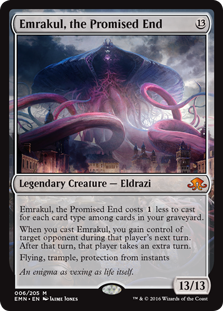
Seems fine for 13 mana, but it didn’t quite work out.
A perfect storm of unintentionally broken cards, surprise rotation changes and emergency “band-aid” bannings has left Standard in a rut as of recent years. With moral around the Standard format perhaps at an all-time low, Wizards is taking action once again.
Today, Mark Rosewater returned for Metamorphosis 2.0. Following closely the format of his original 2014 Metamorphosis piece, 2.0 admits to several challenges faced in recent years and outlining how Wizards plans to address them. Two of the five specific changes are not news: reducing the frequency at which the Gatewatch appear as planeswalker cards, an the creation of the Play Design team. The other three changes, however, turned out to be pretty big news.
Elimination of the Block Set Structure
For almost the entirety of Magic’s history, most sets have been structured as “blocks.” Each block consisted of a large set accompanied by two (or more recently, one) smaller sets that elaborated on the mechanics and world of that block. According to Rosewater,
One of the most eye-opening things about the Two-Block Model was realizing that some of the problems we attributed to the third set were in fact about small sets.
As such, rather than build blocks around one setting, Wizards will now stay in a location for as long as the story requires. The same number of sets will be released each year, but each will be a larger, stand-alone set. This change allows R&D to build a set from the ground up without the requirement that it connect meaningfully to the set before or after, while providing the flexibility to do so if they choose.
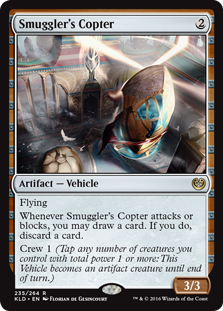
Smuggler’s Copter was turned out to be too pushed, appearing in most Standard decks until its ban. If it weren’t for the overwhelming presence of Aetherworks Marvel, we would likely be in a similar position with Heart of Kiran today.
The most interesting aspect of this change to me is that elimination of a block-based release structure also means the elimination of block-based draft and sealed. This means the upcoming Amonkhet + Hour of Devastation limited format may be the last official multi-set draft environment.
Is this a good change? In terms of design freedom for R&D, of course. But I’m not entirely sure this is a positive change for limited – it could go either way. The positive outcome is that if Wizards releases a limited format you do not enjoy, it gets completely replaced when the next set is released, rather than simply watered down with more of the same mechanic. The negative outcome is the possibility to see multiple formats in a row that are quickly “solved” and become stale.
Part of the fun in a multi-set limited environment is the sheer amount of cards that can see play. This will surely lead to more frequent formats with less variety in each, but the ability to quickly move on from a less favorable format may resolve or alleviate the issue. One way or the other, time will tell, and I’m excited to see how the first few draft environments fully designed after this announcement stack up.
The Return of Core Sets
It is no secret that Standard has been in a rough spot for some time. Among the many reasons for the format’s downturn has been a the lack of good answers for problem cards. Since Wizards works far in advance on most products and are generally unwilling to compromise the flavor of a set for specific reprints, the elimination of core sets made it difficult to get needed reprints into Standard.
While R&D’s refusal to compromise the integrity of an individual set and its mechanics is part of what makes Magic work in the long run, the last year of Standard has proven that sacrifices need to be made. Regarding the difficulty of fitting in needed reprints or answers, Rosewater stated,
Inquisition of Kozilek, for example, was black in a world where all the Eldrazi’s spells were colorless. Ghostfire, ironically, had the opposite problem of being colorless in a world where all the colorless spells were Eldrazi spells.
After the set codenamed “Soup,” next summer will see the return of revamped annual core sets. These sets will focus on “resonant fantasy,” and will be made up of half reprints and half new cards. When in doubt, core sets will be geared toward what R&D thinks is best for new players.
If any of that sounds familiar to you, that may be because Aaron Forsythe used almost the exact same explanation of changes to core sets in an article posted back in 2010 with his piece Recapturing the Magic with Magic 2010. It is perhaps a bit disingenuous, then, to call the return of core sets as we understand them now a “revamp,” rather than a “backpedal.” Either way, the important point is that when players make their voices heard, Wizards often listens. Magic: the Gathering is largely supported by ongoing communities that care deeply about the game, and Wizards has done well to not take that for granted.
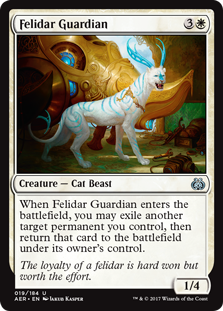
This sort of ability has been fundamentally broken in numerous formats, and players figured out the infinite combo almost immediately.
Throughout Metamorphosis 2.0, Rosewater makes a clear effort to enumerate what enfranchised players will get out of the changes being announced this week. With the return of core sets, Rosewater is promising a limited environment that existing players should find interesting, though likely not for as many drafts as a typical set.
Anyone who has drafted regularly knows that there is a point between set releases where attendance dips, and sometimes drafts do not fire. Or they fire with sub-optimal numbers per pod. A core set draft experience that new players can more easily get into is an excellent idea; the more people drafting, the better!
However, core sets do not come without compromise. Most stores rotate draft formats with set releases. It makes sense that players would move on to the next set, which serves to keep things fresh for regular players and keep new product moving for store owners. It is concerning that a full quarter of the year will be filled with a draft environment specifically designed for new players first.
There is the fear that core sets could lead to a summer drought for drafting, but I think R&D can pull it off. There are many games out there that serve both new and experienced players equally. I do not believe high complexity is necessary for long-time players to have fun with any given format. Hopefully, Rosewater is hedging a bit, and core sets will over-deliver.
Fewer Masterpieces
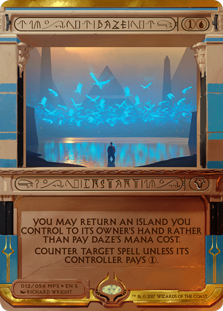
While still not wildly popular, seeing Amonkhet’s Invocations in person turned many players around on the idea.
The last of actually new news in Metamorphosis 2.0 was a dramatic reduction in the release of Masterpiece Series cards. After Hour of Darkness, Ixalan will feature no Masterpieces, and Rosewater stated that they, “aren’t going to be something we do often, but when we do them, they’re going to be memorable.”
This is not a particularly big surprise. While their biggest impact was dropping the price of Standard, Masterpieces also injected non-Standard reprints into circulation. With the return of core sets, hopefully more needed reprints make their way into Standard, and prices stay relatively low. New and younger players – not to mention players without as much income to burn – should be able to play the game affordably.
Of course, a core set reprint by definition will put the card into Standard, which means we likely will not be seeing Force of Will or other powerful cards that made their way into Masterpiece series. It will be important for Wizards to continue printing unreserved cards in supplemental and Masters products.
More Changes to Come
Today’s news may sound like a lot, but it’s only the beginning. More news is coming throughout the week. Perhaps the most highly anticipated news will come tomorrow. In addition to the mentioned announcements about Magic digital offerings will come the next banned and restricted announcement.
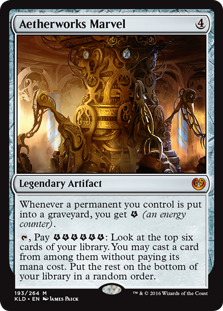
As a rather unfun card to play against, and with an overwhelming presence at pro-level events, many players wonder if Marvel is next on the chopping block.
Many players are calling for a ban on Aetherworks Marvel, which like the Saheeli Rai Cat combo decks before it puts a 4-turn restriction on many potential decks in Standard. It is unclear if Wizards will take action, however, since other bans throughout the year have drawn a less than optimistic response from the community.
Beyond the banned and restricted list, look forward to announcements on “a ton of upcoming new products and worlds” (*cough – Dominaria, please – cough*) on Wednesday. Also of note will be the first official previews for Hour of Devastation, the highly anticipated follow-up to Amonkhet, and return of Nicol Bolas.
With the approaching 25th anniversary of Magic: the Gathering, and Grand Prix Las Vegas kicking off this week, there will surely be plenty of new announcements to look forward to in the coming days.